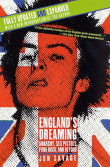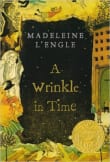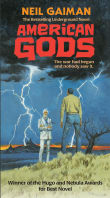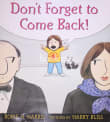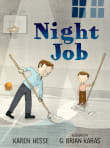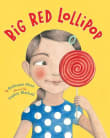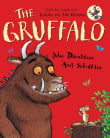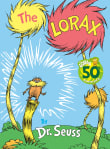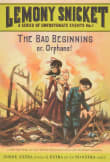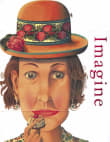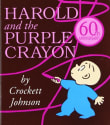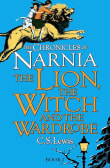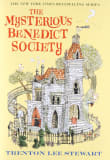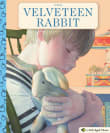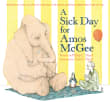Where the Wild Things Are
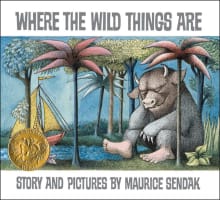
Book description
Read-along with the story in this book and CD edition!
One night Max puts on his wolf suit and makes mischief of one kind and another, so his mother calls him 'Wild Thing' and sends him to bed without his supper.
That night a forest begins to grow in Max's…
Why read it?
15 authors picked Where the Wild Things Are as one of their favorite books. Why do they recommend it?

There is no doubt that this book is the classic example of a real kid with fantasy creatures. Not the first, but the one I return to over and over again. The first time I read it, I thought, “drat! Why didn’t I write this book?”
Not only is the story multi-layered, it is a story that reads like a poem and it has an unforgettable last line.
From Jane's list on kids and mythical creatures.

A story I read so often in my childhood that I could recite it nearly verbatim. I read it frequently to my son. Then my grandchildren. Although they were inexplicably drawn to Bartholomew and the Oobleck by Dr. Seuss and, of course, their grandmother’s books, smart boys.
Here, a naughty boy, Max, runs away and enters a world of wild creatures and becomes their king. Max has a blast being king until he misses home. The transition from foe to friend to king moves quickly but is a topic worth exploring more in-depth.
Kids love the Wild Things dance scene…
From Aviva's list on kid’s picture books about unusual friendships.

This was a picture book that simply encompassed the way I thought as a child. The illustrations married perfectly with the story and urged me into Max’s world while giving me the sensation of riding the edge of a nightmare, minus the fear.
The drawings were masterfully done. The waves and monsters rolled, and I moved, danced, and played with them all in my imagination as if in slow motion, staying in this world as long as I wanted.
It gives me the same sensation today as it did in my youth and hits me with a melancholy nostalgia that…
From Gary's list on picture books that promote creativity and critical thinking.
If you love Where the Wild Things Are...

This is one of the most perfect books ever written (and illustrated).
When Max gets up to mischief, is sent to his room, visits his wild side, and returns a richer boy, he speaks to my wild side. This book is a visual delight that goes beyond words, literally.
I love that the wild rumpus is just being a happy kid who swings from trees, dances, and loves life. I feel happy, too, whenever I revisit this charmer.
From Rebecca's list on to cheer you up and get you to look around.

After reading this story, I was greatly relieved. It was as if the author could see and imagine the world like I did. My dreams at night, filled with boundless wonder, found their perfect match in this book's enchanting tale. The way it connected with my mythical imagination surpassed any other book I had ever come across.
In this extraordinary story, I delved into the life of a young boy named Max. As he donned his wolf suit, chaos ensued within his household, resulting in being sent to bed without supper. But that's when something magical happened. Max's bedroom transformed…
From Will's list on igniting the imagination of young readers.

This is the story of a little boy who feels misunderstood by his parents and imagines escaping to an island full of “wild things”.
After he discovers that he is the “wildest thing” on the island he grows bored and returns home to a “hot supper”. The story is beautifully illustrated by the fanciful drawings of Sendak, while Max’s behavior and experiences are easily understood by children.
From Sylvia's list on illustrated stories for early childhood educators.
If you love Maurice Sendak...

Even before Dr. Seuss, I read this classic.
I reiterate my sentiment on telling powerful stories through rhyme. The rhyme tends to disappear in the same way that subtitles do when watching foreign films, and yet it drives the plot and flow seamlessly. Of course, the illustration is extraordinary and certainly contributes to the appeal, but for me, it is the mastery of the rhyme as it could easily stand on its own.
From Simon's list on children’s stories written in rhyme.

This book starts out with a boy a bit over excited and making mischief and his mother needs to discipline him.
She doesn’t outwardly scold him but rather sends him to his room to manage his emotions. It celebrates that children can manage their own emotions and their own reactions to problems.
It celebrates the amazing imaginations of children. And that they have choice – and given choice, they can remain king to their reactions–they can choose to “stay wild with the wild things” or they can return to calm and join the family again.
The mother’s punishment was not…
From Tina's list on young children to build self compassion.

This is a children’s book published in 1963. My mother read it to me, and now I read it to my daughter. It is, quite simply, wonderful. You probably know this book already, but just in case you don’t, it’s about a little boy called Max who is sent to his room without a meal because he has been naughty and ends up going on a magical journey to a land of wild monsters, where he becomes king. Eventually he returns and finds his warm supper waiting for him. I love this book. It spoke to me as an imaginative…
From Miranda's list on the magic in the ordinary.
If you love Where the Wild Things Are...

A children’s book that’s so much more than the linear tale of a naughty child who crosses the sea to become king of an island of monsters (for being the wildest thing of them all). The simple narrative explores anger, frustration, rebellion, and – perhaps most importantly – the power of a child’s imagination. Through couplets, Maurice Sendak conjures up a powerful story with incredible imagery – who can forget Max’s paper boat sailing back ‘over a year; and in and out of weeks; and through a day; and into the night of his very own room’? – and a,…
From Geoff's list on magic, heroes, and rock ‘n’ roll.
If you love Where the Wild Things Are...
Want books like Where the Wild Things Are?
Our community of 12,000+ authors has personally recommended 100 books like Where the Wild Things Are.




